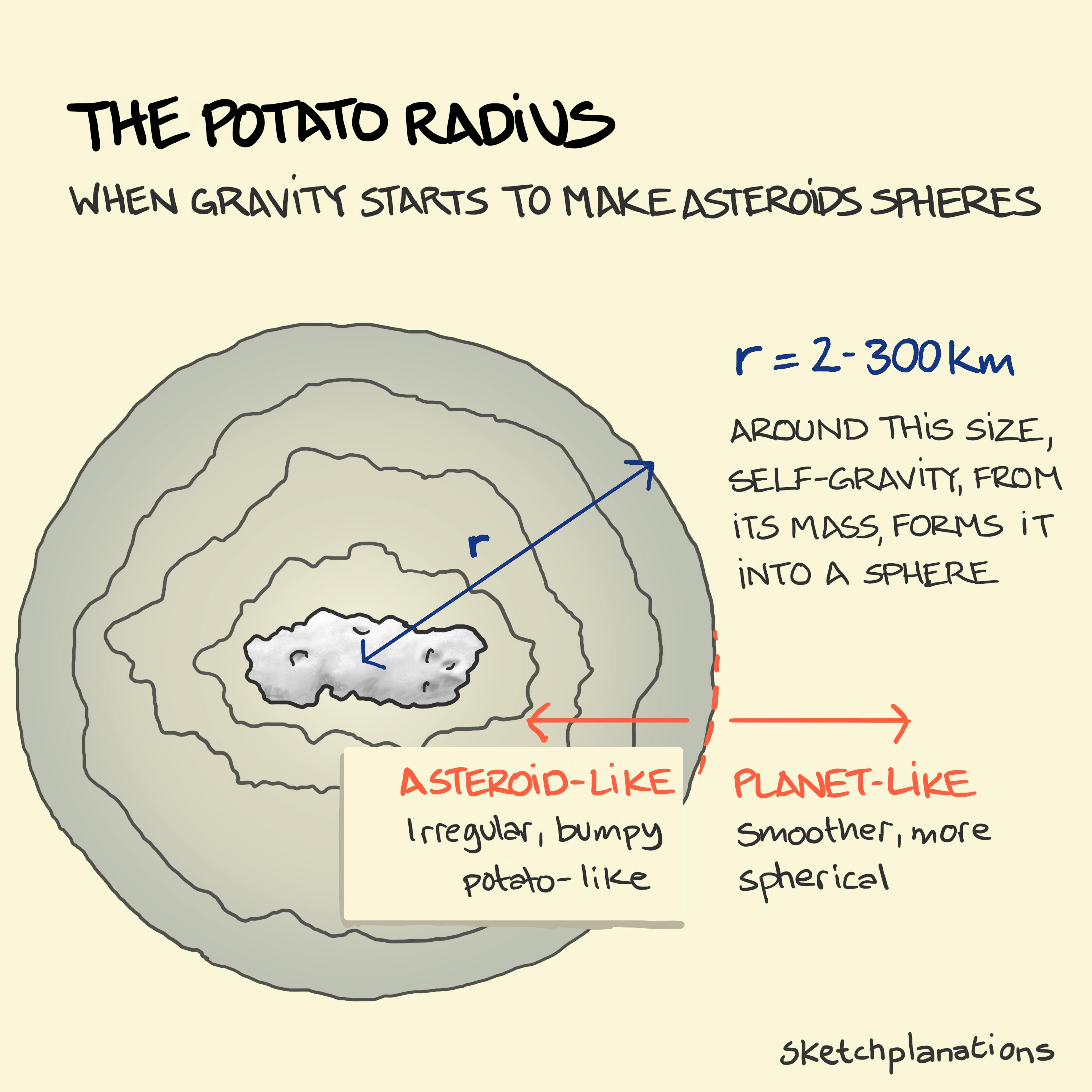The Potato Radius: When Asteroids Turn Spherical

- Prints
- Copied!
👇 Get new sketches each week
Asteroids are often considered irregular, lumpy, potato-shaped rocks, while planets seem smooth and spherical. The “potato radius” is the fascinating threshold where this transformation begins—a concept that illustrates how gravity shapes celestial bodies.
What is the Potato Radius?
When a space rock’s radius (the distance from its centre to its edge) grows to around 200–300 kilometres, its own gravity becomes powerful enough to reshape it. At this size, gravity pulls the rock’s mass inward toward its centre, overcoming its irregular structure and creating a more spherical shape. Think of it like compressing a crumpled ball of paper into something rounder and smoother.
Rocks smaller than this threshold retain their irregular, asteroid-like shapes, while larger bodies transition into planet-like spheres due to self-gravity. This natural process highlights the profound role gravity plays in shaping the universe.
Potatoes as Asteroids in The Empire Strikes Back
Our image of asteroids is so closely linked to potatoes that they have even served as asteroid doubles in movies. In a brilliant example of creative special effects, The Empire Strikes Back used potatoes as some of the asteroids in the famous scene where the Millennium Falcon flies through an asteroid field.
Related Ideas
The potato radius and other remarkable natural phenomena feature in Professor Brian Cox in the BBC series Forces of Nature .
Also see:
- Not sure about Asteroids, meteors and meteorites?
- Solar System Sizes
- The Goldilocks Zone
- What causes the seasons?
- What is a blue moon?
- Phases of the moon
The potato radius features, along with many other fun, spacey-sketches in my book Big Ideas Little Pictures

